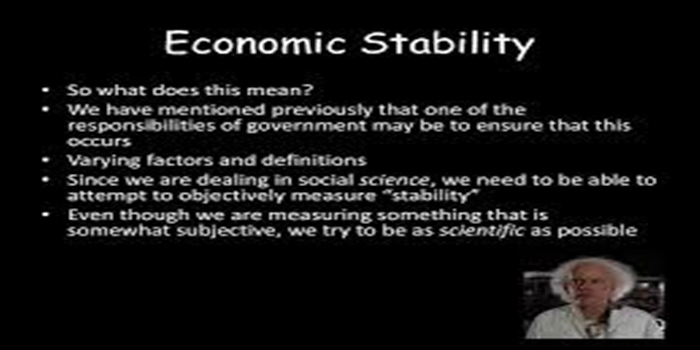In this article, we discussed the meaning of stabilization and distribution, the examples, the types, and we also talked about the benefits.
Definition
“Stabilization” refers to the act of maintaining a steady state or preventing significant instabilities, while “distribution” means the act of allocating or spreading something across a given area or group of people; in economics, stabilization often relates to government policies aimed at keeping the economy stable, while distribution focuses on how wealth or resources are spread among individuals within a society.
Examples of Stabilization Policies:
Monetary policy:
A central bank raising interest rates to combat inflation or lowering them to stimulate economic growth during a recession.
Fiscal policy:
Government increasing spending on infrastructure projects during a downturn to boost aggregate demand.
Intervention in exchange rates:
A government buying or selling its currency to maintain a desired exchange rate.
Examples of Distribution Policies:
Progressive taxation: A tax system where higher income earners pay a larger percentage of their income in taxes.
Social welfare programs: Government programs like unemployment benefits, food stamps, and housing assistance to support low-income individuals.
Minimum wage laws: Setting a minimum hourly wage that employers must pay their workers.
Estate taxes: A tax levied on large inheritances to redistribute wealth.
Stabilization policies are primarily concerned with managing economic fluctuations, while distribution policies focus on how wealth is distributed across different income groups.
Governments often use a combination of both stabilization and distribution policies to achieve their overall economic goals.
Types of Stabilization Policies:
Fiscal Policy:
Government actions like adjusting spending levels or taxation to influence aggregate demand, such as increased government spending during a recession or tax cuts during economic slowdown.
Monetary Policy:
Central bank actions like adjusting interest rates or money supply to manage inflation and economic activity, including lowering interest rates to stimulate the economy during a recession.
Types of Distribution:
Progressive Taxation:
Tax system where the tax rate increases as income level increases, meaning higher earners pay a larger proportion of their income in taxes.
Regressive Taxation:
Tax system where the tax rate decreases as income level increases, disproportionately impacting lower-income earners.
Proportional Taxation (Flat Tax):
Tax system where everyone pays the same tax rate regardless of income level.
Stabilization policies focus on managing economic fluctuations like inflation or recession, while distribution policies focus on how income is distributed across society.
Government interventions through fiscal and monetary policies are the primary tools used for stabilization.
Different taxation systems represent various distribution models.
Benefits of stabilization:
Reduced economic volatility:
By implementing policies to counter economic downturns (like recessions) and cool down overheating periods, stabilization helps maintain a more predictable economic environment, which benefits businesses and consumers by reducing uncertainty.
Lower unemployment:
During economic downturns, stabilization policies can help prevent large-scale job losses by stimulating economic activity through measures like government spending or interest rate adjustments.
Price stability:
Stabilization policies can help control inflation by managing the money supply and preventing excessive price increases, which benefits consumers and businesses by providing a stable pricing environment.
Benefits of distribution:
Reduced income inequality:
By implementing policies like progressive taxation, social safety nets, and minimum wage regulations, distribution aims to lessen the gap between the rich and the poor, promoting social cohesion and economic stability.
Improved social welfare:
A more equitable distribution of wealth can lead to better access to essential services like healthcare and education, improving overall quality of life for a larger portion of the population.
Increased economic participation:
When individuals from lower socioeconomic backgrounds have better access to opportunities, they are more likely to participate actively in the economy, leading to increased productivity and economic growth.
How they work together:
Targeted stabilization policies:
By focusing stabilization measures on specific sectors or demographics most impacted by economic fluctuations, governments can better ensure that the benefits of stabilization reach those who need it most.
Inclusive growth:
By promoting policies that encourage broad-based economic participation alongside stabilization measures, governments can work towards ensuring that economic growth benefits a wider segment of society.
Important considerations:
Policy design:
The effectiveness of stabilization and distribution policies depends heavily on how they are designed and implemented, requiring careful consideration of potential economic and social impacts.
Trade-offs:
Sometimes, policies aimed at stabilization might have unintended distributional consequences, and vice versa, requiring careful balancing between these goals.
Conclusion
“Stabilization and distribution” refer to the economic concept where a government uses policies to maintain overall economic stability (through measures like managing inflation and unemployment) while also actively working to distribute wealth more evenly across the population, aiming to mitigate income inequality; essentially, balancing the need for economic stability with social equity through targeted interventions.


